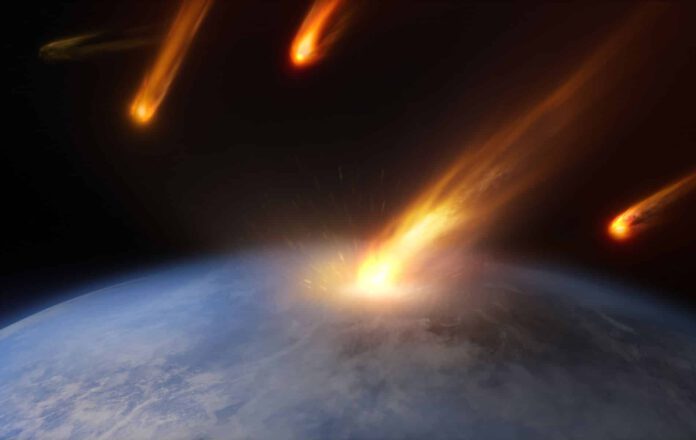
The Close Call Of Asteroid 2023 NT1
On July 13, 2023, asteroid 2023 NT1 skimmed by Earth at a distance of only 100,000 km, and scientists were none the wiser. This startling event raises the question: to what extent can humanity protect the Earth against smaller asteroids like 2023 NT1? American scientists may have conceptualized a potential solution.
A Potential Solution
In their study, the researchers describe how smaller asteroids, such as 2023 NT1, could still be destroyed even if they were detected when already very close to Earth. They propose a method known as PI, short for ‘Pulverize it.’ With this method, a rocket equipped with penetrating rods is utilized. Some of these rods are made completely of one material, while others are loaded with traditional explosives. When the rocket gets close enough to the asteroid, the rods are discharged and pierce the flying threat, causing it to break into smaller pieces with a maximum diameter of 15 meters.
Quick Response
The significant advantage of PI is that it allows for a very rapid reaction. The scientists note that even when an impact is just hours away, it’s still possible to neutralize the asteroid. Even in such scenarios, the remaining fragments would largely burn up in the Earth’s atmosphere. The shockwave from any fragments that might land would not have enough energy to cause significant damage to natural areas and cities. On Earth, bystanders would mainly witness a large light show comprising a series of harmless bangs and flashes.
Not the Only Method
PI is not the only technique by which asteroids can be destroyed. Scientists have developed another defense technique, deflection. A prime example of this is the experiment performed approximately a year ago with the space rock Dimorphos. A DART space probe was slammed into the space rock at a speed of 6 km/s, resulting in a successful alteration of the rock’s trajectory.
However, the disadvantage of deflection is that planning, building, and launching the space probe can take many years, if not decades. Furthermore, it requires a great deal of funding and materials to construct such a space probe. The issue with smaller asteroids is that they often can’t be detected years in advance – sometimes only weeks or days before impact. Or as was the case with 2023 NT1, not at all.
Preventing Catastrophe
In an ideal situation, an asteroid would be detected decades, even centuries before its impact. In such cases, deflection might be more effective, as only a smaller trajectory alteration would be necessary. The study repeatedly emphasizes that PI is intended primarily as an addition to the available option, not as a replacement for the deflection method.
However, the researchers also point out that in order to destroy something, it first needs to be observed. They consistently underscore the importance of efficient detection methods. Significant hope is placed on future observatories like the Rubin Observatory Legacy Survey of Space and Time (LSST) and NASA’s upcoming Near-Earth Object (NEO) Surveyor. While it’s certainly encouraging that a method has been devised to neutralize smaller asteroids like 2023 NT1, it currently still feels somewhat akin to hunting in the dark without a flashlight.











